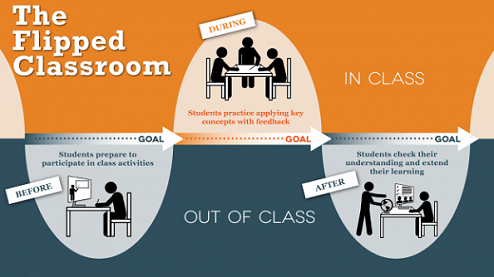
Flipping training and education off
I’m being a bit provocative with the title of my post, but the metaphor is not entirely without warrant. For as the case with all the new technologies out there disrupting how we traditionally do things, providing and obtaining training and education is no exception. As is outlined in this article from the New York Times, there seems to be a growing movement to turn the traditional lecture based education process upside:
Three years ago, Clintondale High School, just north of Detroit, became a “flipped school” — one where students watch teachers’ lectures at home and do what we’d otherwise call “homework” in class. Teachers record video lessons, which students watch on their smartphones, home computers or at lunch in the school’s tech lab. In class, they do projects, exercises or lab experiments in small groups while the teacher circulates…
fter 20 weeks, Green said, Scheel’s flipped students, despite their disadvantages, were outperforming the students in the traditional classroom. No student in the flipped class received a grade lower than a C+. The previous semester 13 percent had failed. This semester, none did. In the traditional classroom, there was no change in achievement…
The results were dramatic: the failure rate in English dropped from 52 percent to 19 percent; in math, it dropped from 44 percent to 13 percent; in science, from 41 percent to 19 percent; and in social studies, from 28 percent to 9 percent.
The next year, in the fall of 2011, Clintondale flipped completely — every grade, every class. “On average we approximated a 30 percent failure rate,” said Green. “With flipping, it dropped to under 10 percent.” Graduation rates rose dramatically, and are now over 90 percent. College attendance went from 63 percent in 2010 to 80 percent in 2012.
This graphic below illustrates this model quite well:
As a project management trainer and educator, I’m always looking for ways to enhance my training and education programs and this seems to be an interesting way to do so. One comment I regularly get from people looking to get the PMP certification, for example, is that they find the training tedious and outright boring. I think using some technique like the above can make the this endeavor more interactive, lively and relevant.
Of course, I think there’s much more to this than just flipping the learning process and making learning more interdisciplinary and personally meaningful and relevant. In any event, this is an interesting new trend to watch for and is relevant to those who train and teach as well as those who attend training and classes to further their education and careers.

